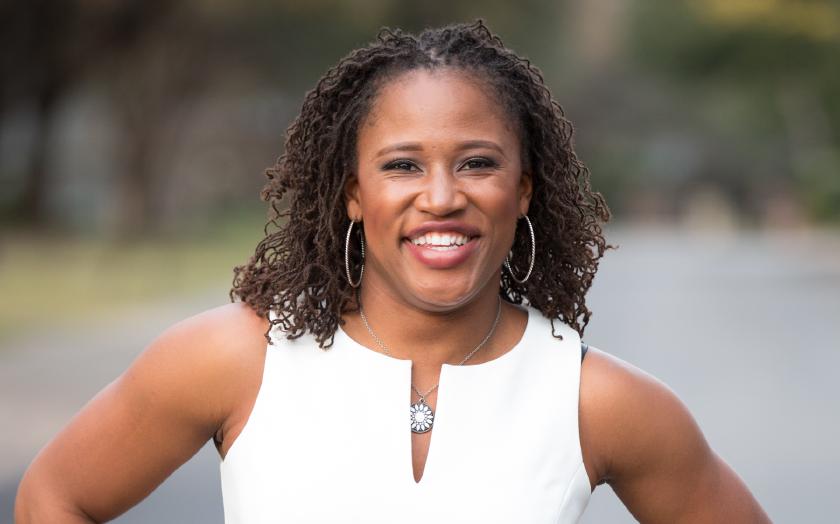- Debt
- Financial Health
- Money Management
3 Tips to Help You Tackle Student Loan Debt

The racial wealth divide is a topic that’s starting to gain more attention in mainstream media. One area of this divide often neglected is student loan debt. Many are forced to take student loans in order to get an education. However, most people receive almost no information on how to handle this debt once they have graduated. If you have a degree you worked hard for and it came with a large debt you’re ignoring because it makes you anxious, you’re not alone.
POC tend to have more debt than their counterparts
The statistics are disproportionately negative for people of color when it comes to student loan debt. The numbers look something like this:
- “86.6% of black students borrow federal loans to attend four-year colleges, compared to 59.9% of white students.”
- “Graduates of historically black colleges and universities (HBCUs) take on 32% more debt than their peers at other colleges.”
- “Black student-loan borrowers default on their loans at five times the rate of white graduates.”
- “White borrowers pay down their education debt at a rate of 10% a year, compared with 4% for black borrowers.”
To make things worse – on average Black borrowers are making less than their counterparts, and studies are finding they’re far more likely to never be able to pay student loan debt off.
Tips on Tackling Student Loan Debt
If you don’t want to be paying off your student loans forever, it’s important you learn how to tackle them instead of ignoring them. These three tips can help:
-
Don’t assume refinancing is the best option
While you may feel obligated to pay back every penny of the money you borrowed, sometimes it’s financially unrealistic to do so. It’s true, refinancing allows you to pay lower interest rates which can save you money over time, but it’s not the best plan for everyone.
Refinancing could be a great option for those who can easily afford their monthly payment along with their other financial obligations. If you make more than you owe, repaying your loans back in full might be the best way to go.
If you choose to refinance, it is best to be sure because it could take away your ability for any forgiveness options (more on that below). It also takes away your ability to make payments based on your income.
-
Find out if you qualify for student loan forgiveness
A lot of people think student loan forgiveness is a scam. But there are some honest options out there. If you meet the criteria, forgiveness will be at the end of your payment term. The key is not assuming it’s available to you, instead it’s important you understand the forgiveness options and what you need to do in order to be eligible.
Here are two options for student loan forgiveness.
-
Public Service Loan Forgiveness
To qualify for PSLF, there are four criteria you need to meet:
A PSLF could be a good option if you work for a qualifying employer. This could include public organizations, government organizations, and nonprofit organizations. Find out if your employer qualifies by filling out the Employer Certification Form. Typically your monthly payments will be based on your income. Reach out to your loan servicer to discuss your options and what the requirements are for qualifying.
-
Income-Driven Repayment Plan Forgiveness
If you do not qualify for PSLF you may still be able to choose an Income-Driven Repayment Plan. If you qualify any remaining debt could be forgiven after 20 or 25 years. That may sound like a good thing, but this is an area where many POC are left vulnerable. Black college graduates ages 21 to 24 earn $3.34 less per hour than their white peers. Meaning the Income-Driven plan, while it may have lower month-to-month payments, could mean a longer loan repayment and potentially more interest that must be paid.
-
-
Create a plan for paying back your student loans
The first step to creating a plan for your student loans is to take inventory. It’s easy to want to go with the “out of sight, out of mind” strategy. But that’s only going to hurt you.
Start by learning what types of loans you have.
If you have private loans, your options to pay them back may vary. Talk to your loan servicer for more information on the options that can be provided. This may require refinancing so make sure you get a budget in place so you can pay them down faster.
If you have federal loans, there are a lot more choices. Explore your options for Public Service Loan Forgiveness and Income-Driven Repayment Plans. Consider talking to your servicer about other options. If you won’t then it’s smarter to pay them off faster.
Don’t be too proud to ask for help
You don’t know what you don’t know, and most people aren’t taught how to handle their student loan debt after graduation. There’s no shame in asking for help! Working with a Certified Student Loan Professional or Financial Adviser can help you create a plan that’s specific to your situation.
Written by Lauryn Williams of www.lauryn-williams.com



